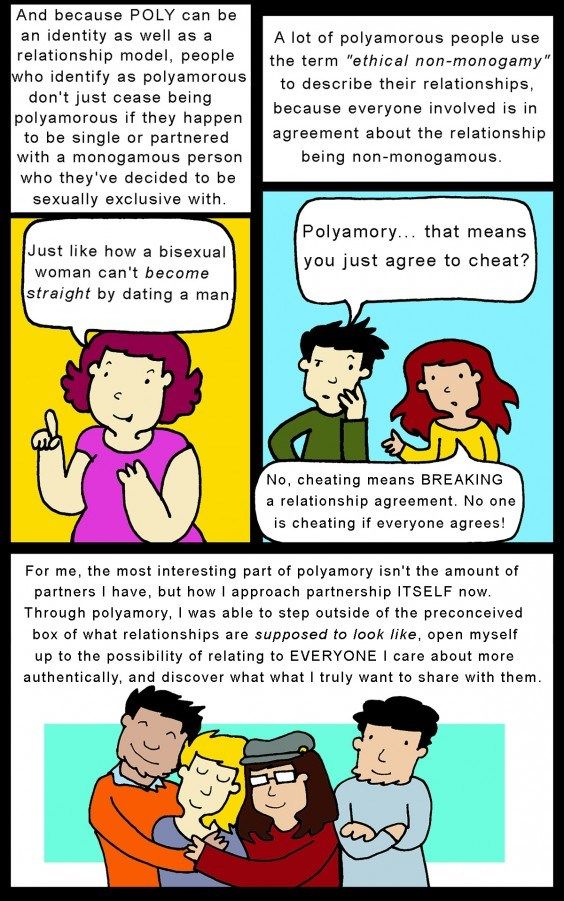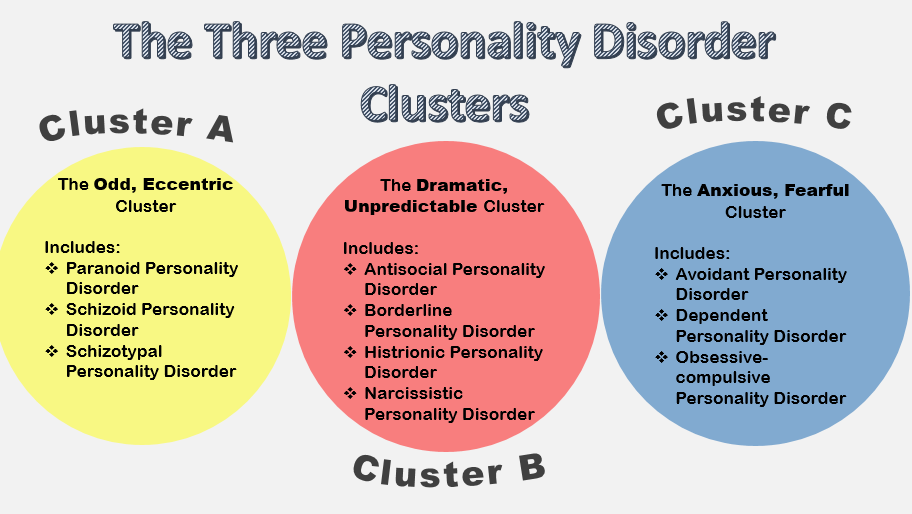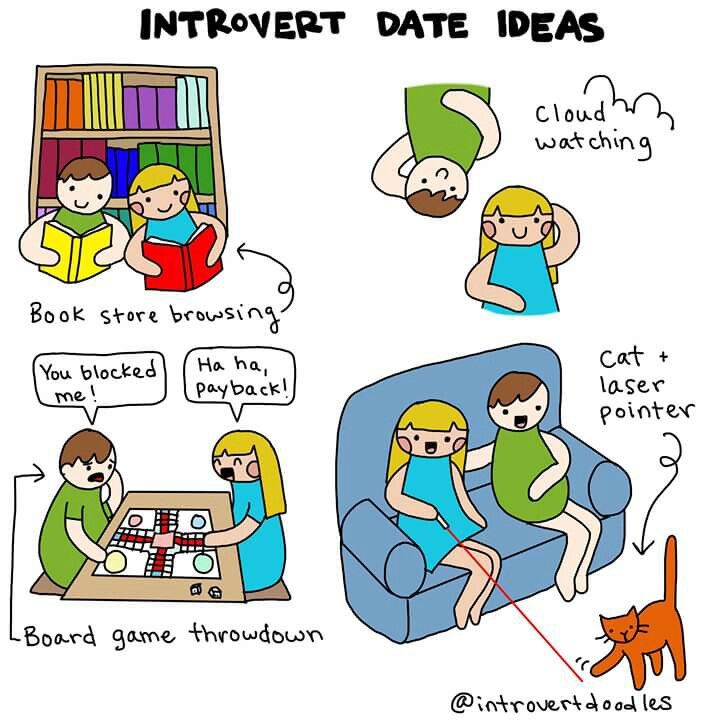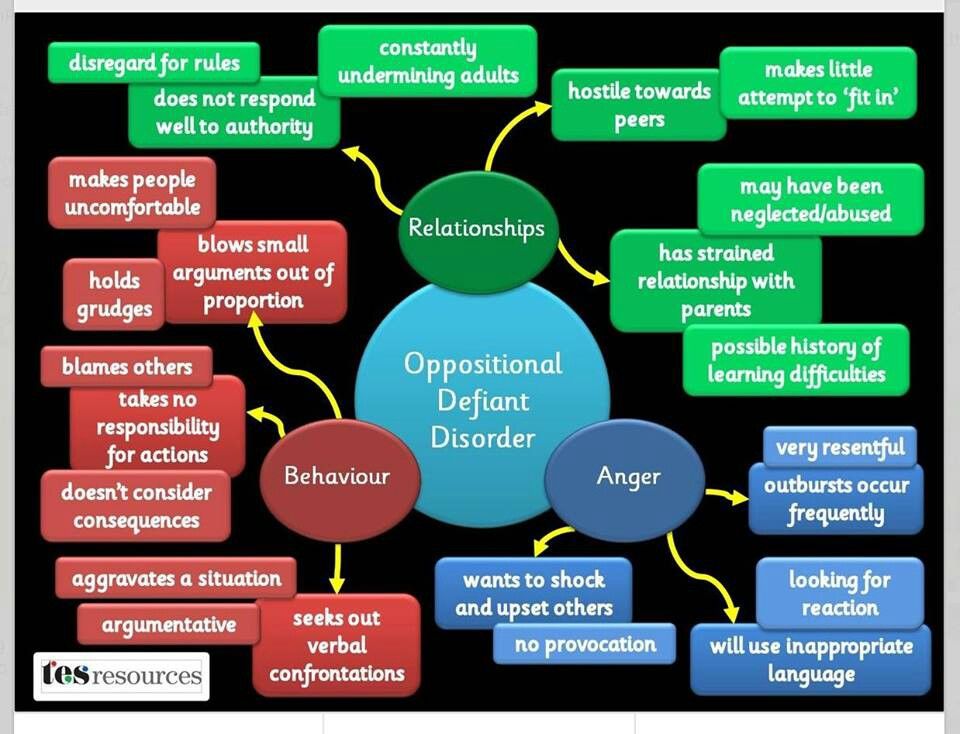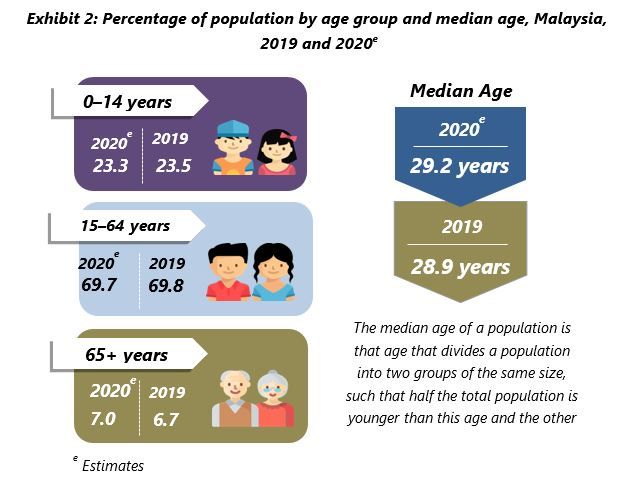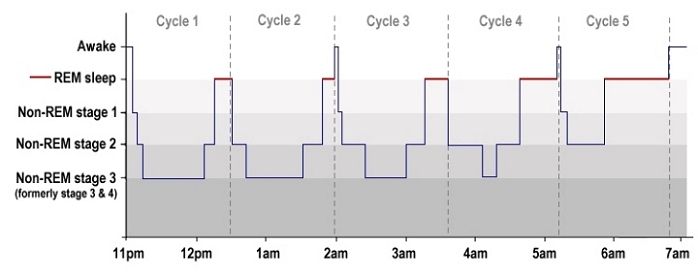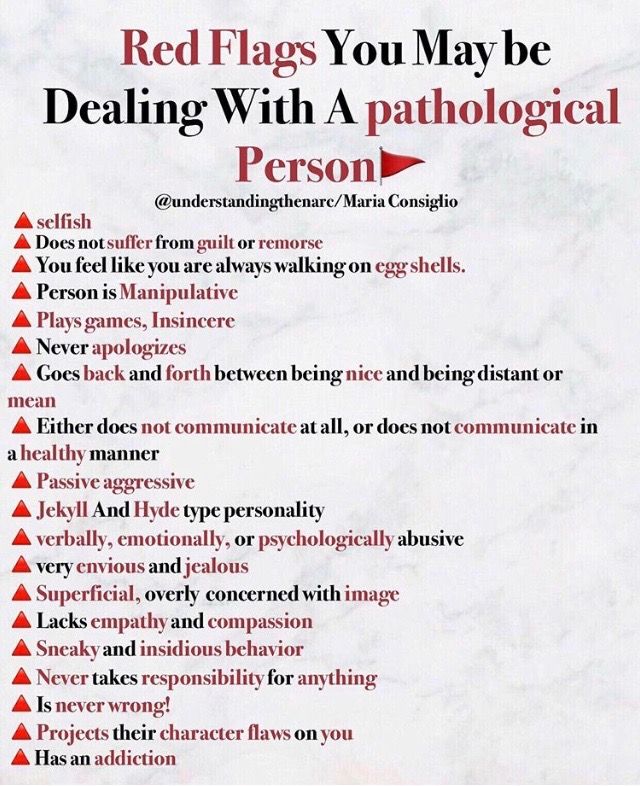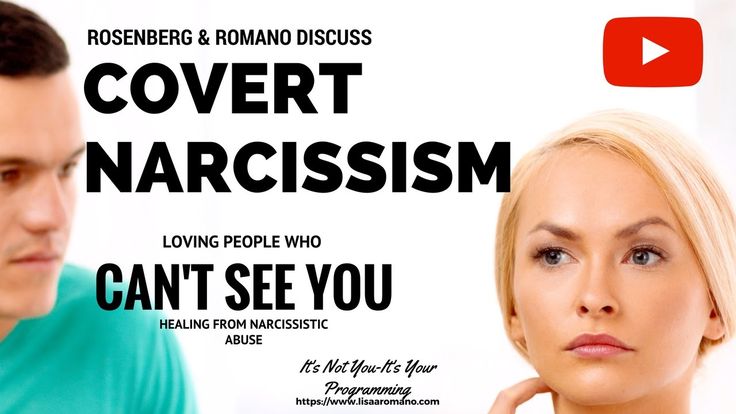Why are people polyamorous
Why Do People Seek Polyamory and Poly Relationships?
People seek polyamory and polyamorous relationships for a variety of reasons. Here are a few common ones:
Contents
- 1 Couples want to play with others
- 2 People say, “Hey, that’s me!”
- 3 Curious and questioning
- 4 Circumstances present poly as an option
- 5 Monogamy doesn’t work
- 6 My story
Couples want to play with others
Couples are committed to staying together and they want to be involved with other people. Having a poly relationship offers a framework to explore intimate connections with other people without compromising their connection.
People say, “Hey, that’s me!”
Some people naturally find themselves capable of loving more than one person at a time. It’s as if they’ve identified with the term “polyamory” before realizing the term exists! When they learn that poly is a real thing, they feel a sense of joy and relief. They no longer have to hide who they are or feel alone in their experience.
With this new awareness, they feel more confident to actively pursue relationships that feel more aligned with their true nature.
Curious and questioning
Some people like the idea of polyamory but don’t really know what it’s like to be polyamorous. These people tend to dive into the lifestyle to help them determine if polyamory is a good fit for them.
Circumstances present poly as an option
Some people stumble into polyamory as a secondary partner. The secondary partner may be new to polyamory and stay with it so they can be in a relationship with the polyamorous person. The success of any secondary relationship depends on everyone’s ability to stay true to their unique needs and desires and support others in doing the same.
Monogamy doesn’t work
Some people consider polyamorous relationships because they’ve had terrible experiences with monogamy. These people are ready to have an entirely new relationship to relationship. They view polyamory as a great way to be in a relationship with someone without repeating old patterns.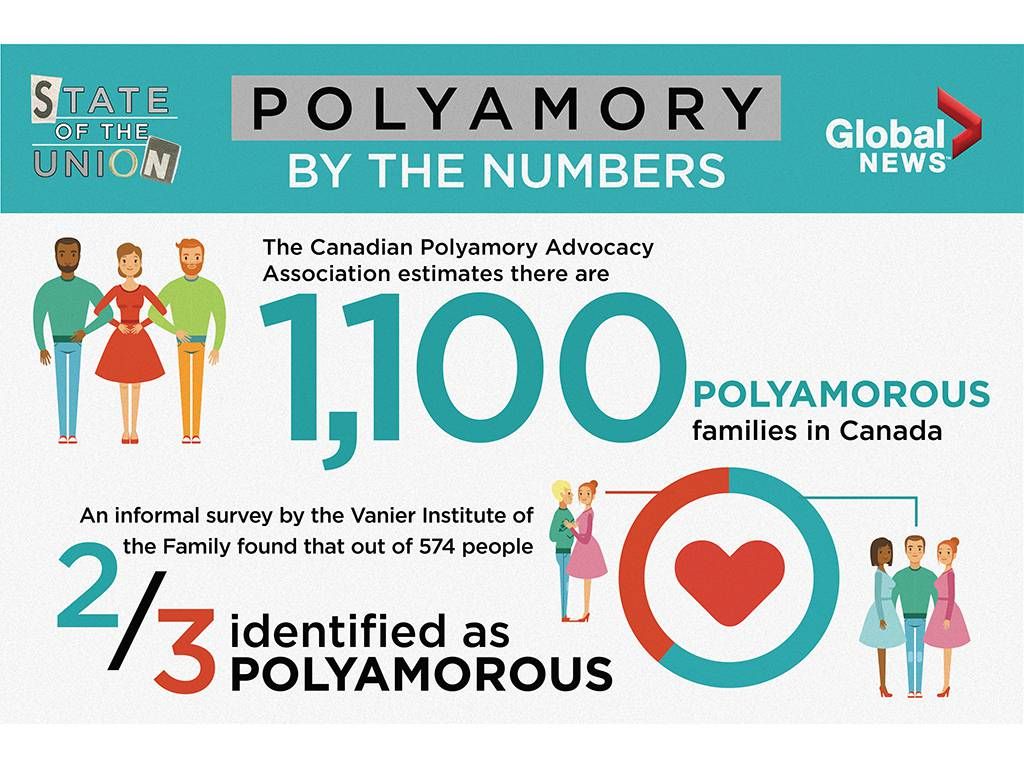
My story
I chose polyamory because I was at a point in my life where I was ready for an upgrade my relationship lifestyle. My previous relationships were all monogamous. And, for whatever reason, each one came to a point where I felt trapped. I often had the sense that I was losing a part of myself. After an incredibly challenging relationship, it became clear to me that I was done with traditional relationships. I was ready to step out of the societal norm and create my own path. I wanted to be in a relationship that supported my deepest desires and supported the deepest desires of my partner or partners. I feel incredibly fortunate that my primary partner and I share the same values regarding our relationship together and our relationship with others. It is dream come true for both of us.
To learn more about my poly friendly therapy approach and to see if working together is the best fit for you, contact me and schedule a Poly-Coach Session today!
About the Author
Laurie Ellington
I teach people how to break through false beliefs and negative behavior patterns. I offer my clients tools that empower their life and their relationships.
I offer my clients tools that empower their life and their relationships.
Why Polyamory Works, According to People With Multiple Partners
- Polyamory, or a consensual relationship involving more than two partners, may sound like a recipe for jealousy and mistrust to some people in monogamous relationships.
- But research has shown that the practice can allow polyamorous people to have their sexual and companionship needs met simultaneously, which is less likely to happen in long-term partnerships with only two people.
- Insider talked to three polyamorous people to learn why the relationships work for them. They pointed to benefits like personal growth, more practical resources, and sexual satisfaction.
- Visit Insider's homepage for more.
Thanks for signing up!
Access your favorite topics in a personalized feed while you're on the go.
To outsiders, polyamory — having multiple romantic partners, all of whom know about each other and consent to the setup — may seem like a recipe for jealousy and mistrust. And indeed, those feelings can come up in some situations.
But for some people, polyamory brings a lot more to their lives than it takes away.
One reason it may be so satisfying is that more partners can mean more needs met, a study in the journal Social Psychology suggests.
The study, which included thousands of people in both monogamous and polyamorous setups, found that people in polyamorous relationships may better be able to experience both nurturance (the comfort and security associated with long-term relationships) and eroticism (sexual pleasure and passion associated with new partnerships) at the same time.
Those findings ring true to Laura Russel, a librarian in Texas whose marriage began monogamously but has since opened up to include more partners.
Read more: I've been with my spouse for 5 years, but I'm interested in an open marriage. How do I tell my partner, who also has zero experience with polyamory?
"One partner may be less vocally affectionate, but very affectionate physically, and another partner could be the reverse," she told Insider. "Instead of expecting one person to step up and change to meet your needs, you could have other partners that provide that nurturance through a variety of ways."
In addition to Russel, Insider talked to two other polyamorous people to find out why non-monogamy works for them.
Love is not a limited resource, polyamorous people say. Shutterstock/88studio Polyamory can fulfill a desire to be with both men and womenDaniel Saynt, who calls himself the "chief conspirator" of the sex- and cannabis-positive club New Society for Wellness in New York City, was in a monogamous marriage through most of his 20s.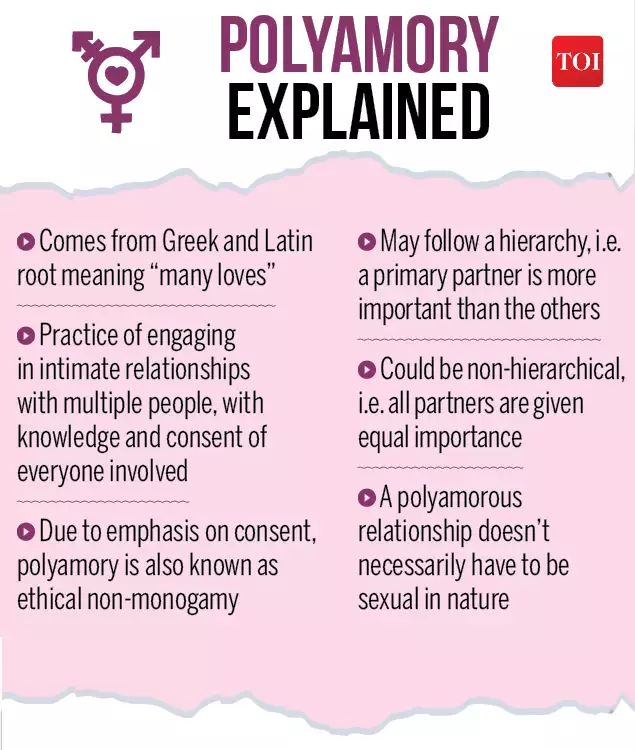 He and his wife had a "don't ask, don't tell" understanding at first, but eventually, she wanted to know about his self-described "sexual exploits."
He and his wife had a "don't ask, don't tell" understanding at first, but eventually, she wanted to know about his self-described "sexual exploits."
Their relationship crumbled. After the two divorced, Saynt met his now-fiance, another bisexual man.
The two were in a polyamorous relationship with a woman for eight months. "The dynamic was great," Saynt said. "I truly felt I had found what I was looking for: a loving relationship with a man and a woman."
Read more: I'm bisexual — here are 5 things I wish people understood
Russel, who's also bisexual, finds polyamory is an ongoing educational experience in the bedroom.
"It's nice to come home to a partner and show them something new you learned or experienced," she said. "I can experience different things with women than I can with men, and my sexual appetite is always sated."
More people in a relationship can mean more financial and child-rearing supportFor Saynt, who's in his mid-30s, polyamory also suits from a practical standpoint.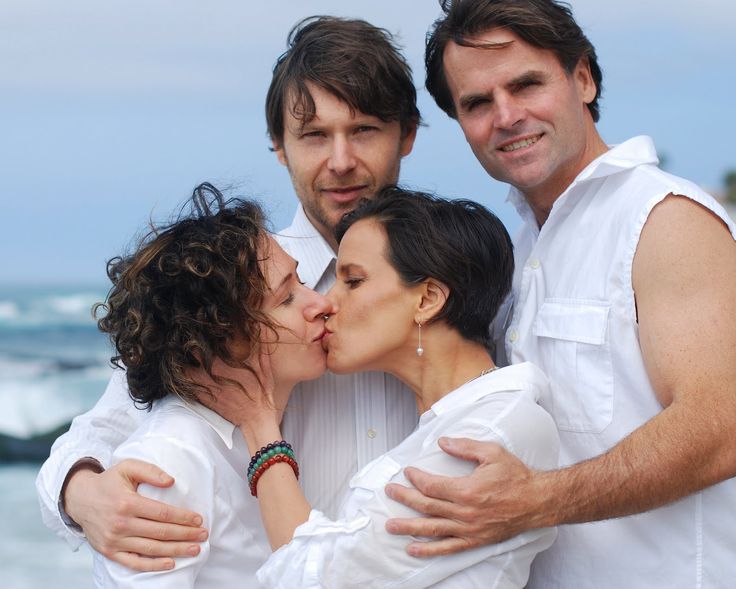
"We as millennials are living in an environment where it's harder to save, harder to plan for our futures," he said. "We're taking longer to marry, which means it's becoming more difficult to establish ourselves, purchase homes, and build our families."
He says he sees his future "standing on three legs," and not only because a woman could bring the prospect of pregnancy, but also because a third partner would mean more financial, emotional, and logistical support.
"I think there's going to be a major shift in how we view family planning and more stories of units of people coming together to raise kids," he said.
Polyamory could broaden your networkAndre Shakti, a sex educator, coach, and columnist in Baltimore, has been openly non-monogamous for a decade. She typically has two or three committed long-term partnerships at once, as well as some casual connections across the country.
Among other benefits, Shakti appreciates the broad resource pool her lifestyle brings her.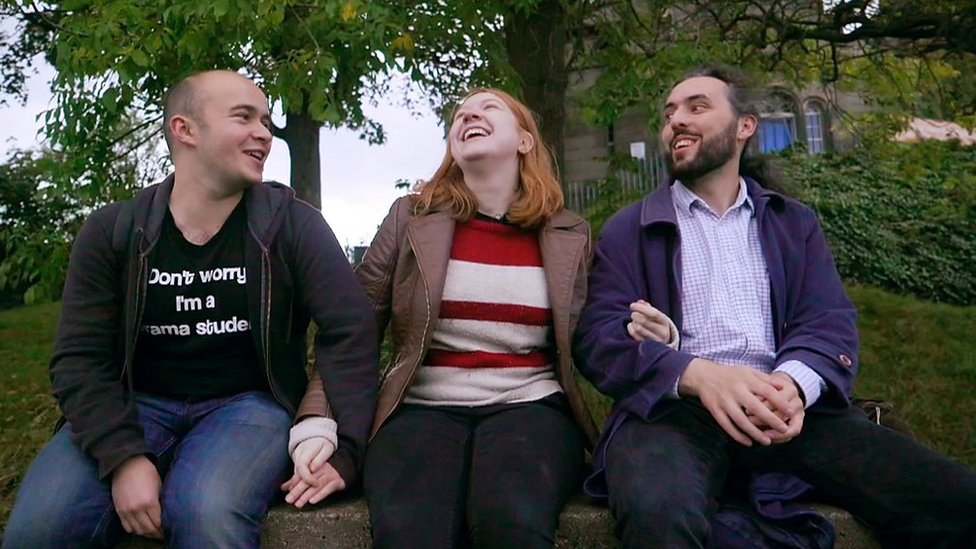 "Whether I need someone to drive me to the airport, source prescription medications for me, or assist me with some web development work, my polyamorous network of partners and metamours — or the partner of my partner — I'm largely set," Shakti told Insider.
"Whether I need someone to drive me to the airport, source prescription medications for me, or assist me with some web development work, my polyamorous network of partners and metamours — or the partner of my partner — I'm largely set," Shakti told Insider.
Read more: People in relationships with multiple partners reveal 7 things about what it's really like
Shakti, who often works more than 60 hours a week, also said being accountable to more than one person forces her to be diligent about her own self-care. "Having multiple partners in my life means being encouraged to plug self-care plans into a shared Google Calendar," Shakti said.
Polyamory can force people to be more introspective, and to grow as a result. wavebreakmedia/Shutterstock Polyamory might help you grow as a personFor Saynt, competition in the relationship encourages him to always bring his best to the table.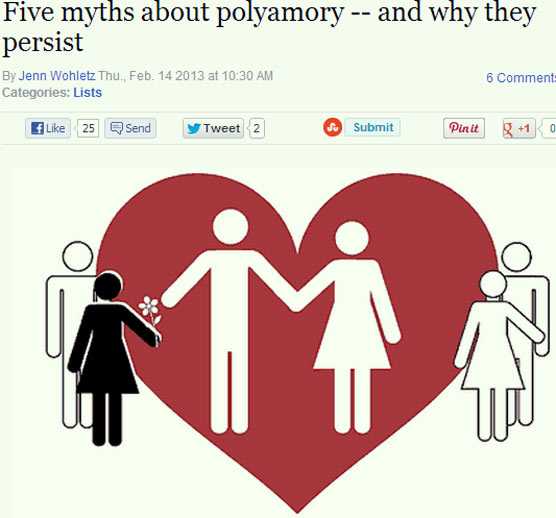
"It makes you try harder to show your love, to do the things that remind both partners there's enough to go around," he said. "Being in a poly relationship leads you to being a better communicator, a better lover and a more emotionally connected individual, not only to your partners but to the world that surrounds you."
Russel also finds polyamory has made her grow as a person. "If I feel jealousy, I sit and really dig into my psyche to figure out why, and once I have, then I can start to work through it, instead of using that jealousy to try to control my partner or lash out at them," she said.
- Read more:
- Signs you're a bad partner even if you think you aren't
- People who are addicted to dating apps may have loneliness and social anxiety in common
- Cheating on your partner in Oklahoma could land you in jail for five years. In these 6 other US states, infidelity could also get you in legal trouble.
Polygamy - taboo or norm?
In Western culture, for a long time, monogamy was considered the norm of relationships.
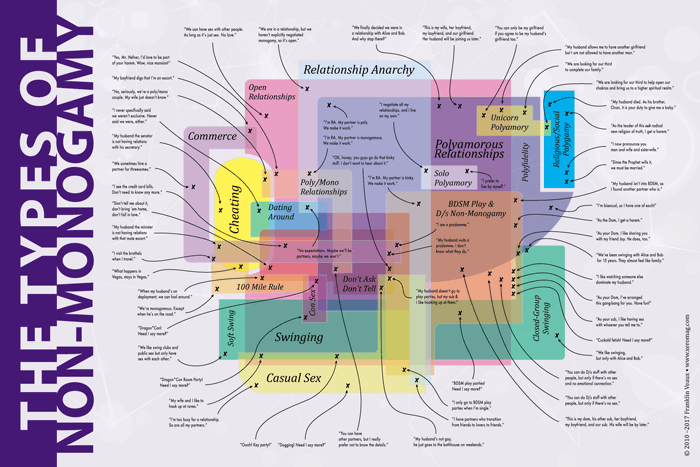 And deviations from it - a large number of partners both in marital and intimate life - were condemned and ridiculed. But today, in the Western world, polygamous relationships are acquiring the status of a new norm: someone completely disagrees with this, someone believes that polygamy undermines the traditional institution of marriage, and someone, on the contrary, is sure that the more love, the more better.
And deviations from it - a large number of partners both in marital and intimate life - were condemned and ridiculed. But today, in the Western world, polygamous relationships are acquiring the status of a new norm: someone completely disagrees with this, someone believes that polygamy undermines the traditional institution of marriage, and someone, on the contrary, is sure that the more love, the more better. Polygamy in the animal world
Thanks to comparative ethology, man explains many features of his behavior by instincts and laws of nature. Despite the complex structure of human society, many processes are still not far from the animal world. And yet, as the scientists themselves say, a person - considering himself a more highly developed being - often overly romanticizes the animal world.
Thus, swans and storks have been models of marital fidelity for many years in Western culture. This belief lived until 1980s, until biologists began to use genetic methods in their research. Then it turned out that even such legendary monogamous species as swans and storks, which really maintain partnerships for a long time, have "extramarital" sexual relations, and males often raise other people's cubs. About 80% of birds turned out to be such “walkers to the left,” says Andrei Chaborsky, Doctor of Biology, in an interview with Postnauka.
Then it turned out that even such legendary monogamous species as swans and storks, which really maintain partnerships for a long time, have "extramarital" sexual relations, and males often raise other people's cubs. About 80% of birds turned out to be such “walkers to the left,” says Andrei Chaborsky, Doctor of Biology, in an interview with Postnauka.
Thus, the animal kingdom made it possible to divide polygamous and monogamous relationships into two subcategories: sexual and social. In the case of sexual polygamy, we are talking about multiple sexual relationships with different partners (which can be either promiscuous or vice versa - due to the genetic potential of the partners). And social polygamy suggests that partners maintain close partnerships.
Polygamy at the level of biology is presented in several ways:
Polygyny
When one male has sex with several females. For example, this can be observed in the Bengal tiger family, in red deer and elk, in these groups there is an alpha male, and females raise offspring by joint efforts. Thus, the male has a better chance of reproducing, if he is alpha, then many more females will receive exclusive genetic material for the next generation. And the offspring will always be fed and protected by a large number of females with an active parental instinct.
Thus, the male has a better chance of reproducing, if he is alpha, then many more females will receive exclusive genetic material for the next generation. And the offspring will always be fed and protected by a large number of females with an active parental instinct.
Polyandry
Or "polyandry" in the animal world. This is a relatively rare phenomenon in comparison with other types of polygamy, because the main burden associated with pregnancy and childbirth lies with females, and males can take the time of female pregnancy to realize their reproductive potential - that is, fertilize as many females as possible and leave their genetic footprint in history. But if animals live in conditions of limited resources, then some do not disdain polyandry, while others do not turn into gigolos. For example, this is done by deep-sea anglerfish that live at a depth of 1500-3000 meters. For these representatives of the animal world, the stage of "fusion" at the beginning of the relationship does not stop - the male clings to the female and fuses with her, he receives nutrients from the blood, sends genetic material there, and after some time discards everything superfluous, including fins and own individuality.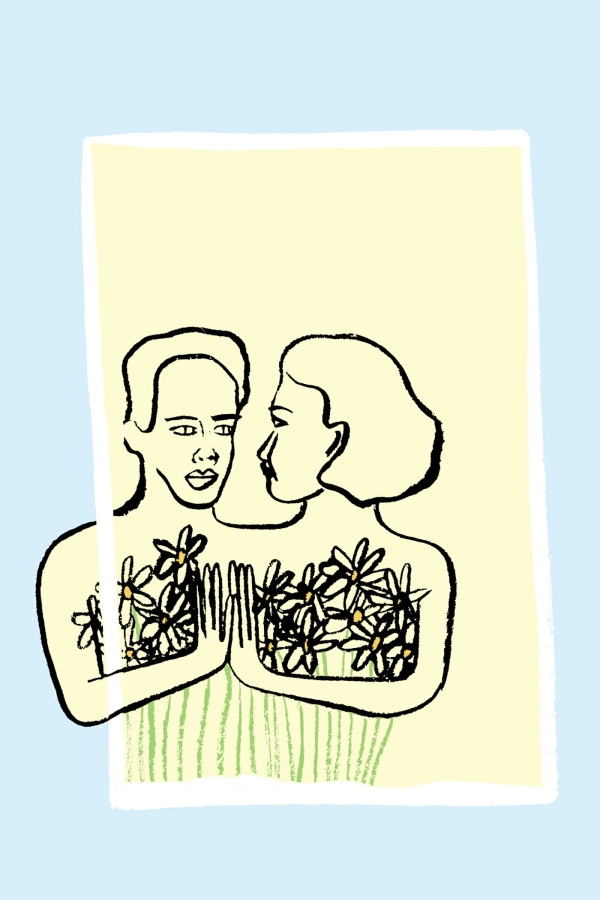 A female anglerfish can thus drag three adult males on her.
A female anglerfish can thus drag three adult males on her.
Omnigamy
The kind of polygamy that is easier to describe with the phrase "all with everyone" - males and females have an unlimited number of sexual partners, while family relationships are not maintained. The cubs are raised by self-sufficient single mothers, who, as soon as the offspring begin an independent life, will go in search of new adventures.
Why do animals need polygamy?
According to Darwinian theory, sexual polygamy makes it more likely to conceive healthier offspring with diverse genetic makeup, so that the most resilient and survivable offspring will also leave behind healthy offspring in the future.
Is there sexual monogamy in animals?
This is more of an exception than the rule. In an interview with Postnauka, Andrei Chaborsky talks about only 4 types of mammals, in whose relations there is sexual monogamy. These are, for example, the California deer hamster and some types of voles.
Monogamy - including social - is explained in the animal world by many external factors. For example, when representatives of a species are scattered over a large area, it is “more profitable” for a male not to waste his time and energy searching for and fertilizing each female, but to concentrate on a quality family life with one chosen one. Many birds and mammals are monogamous in order to ensure the best survival of their offspring. Thanks to the division of duties, they can take turns hunting and protecting their young.
Polygamy in humans
The question of whether a person is monogamous or polygamous can be considered cultural rather than biological. Man, despite all the culture, smartphones and developed speech, is still an animal whose interests (according to nature) are to leave healthy and viable offspring. This task is solved with the help of sexual polygamy.
Historians point out that in tribal societies, polygamy was normal, if only because it was a natural way to overcome high infant mortality. For example, there was a dual group marriage among Australian Aboriginal families (considered the first historical version of marriage and family structure): in it, all men of one family were potential husbands of all women of another family. At the same time, the marriage was easily dissolved, the spouses had a certain sexual freedom and could not even live together, but remained inside their ancestral settlements. The children remained in the mother's family, and the spouses could meet only to conceive new children.
For example, there was a dual group marriage among Australian Aboriginal families (considered the first historical version of marriage and family structure): in it, all men of one family were potential husbands of all women of another family. At the same time, the marriage was easily dissolved, the spouses had a certain sexual freedom and could not even live together, but remained inside their ancestral settlements. The children remained in the mother's family, and the spouses could meet only to conceive new children.
With the collapse of the tribal system and the transition from a hunting society to an agrarian one, marriage relations are also transformed. The economic role of the man grows, patriarchy appears, in which the husband takes the leading role in the community and family. At this point, marriage becomes a guarantee that land, livestock and all property acquired by overwork will remain within the family. The concept of a monogamous family appears, in which there are only two spouses and common children. But even in this variant, polygamy remains interspersed.
But even in this variant, polygamy remains interspersed.
-
Unlike women, men have greater sexual freedom (for example, a guest or traveler in some cultures had the right to have sex with the host's wife or daughter).
-
Polygamy becomes a privilege for status men - kings could have favorites, and vassals - the right of the first night.
-
If a woman was ransomed from her family and wanted to return to it, the bride's family had to return the ransom. Even after the death of her husband, the wife remained in the family that bought her and could remarry with a relative of the deceased spouse.
At the same time, polyandry begins to exist. For example, in some areas of Tibet, fraternal polyandry was common, when several brothers marry the same woman. In this format of marriage, men did not need to divide the land and give a piece to the newly formed family.
In pre-industrial society, the position of polygamy was determined by the religion operating in the territory and cultural attitudes.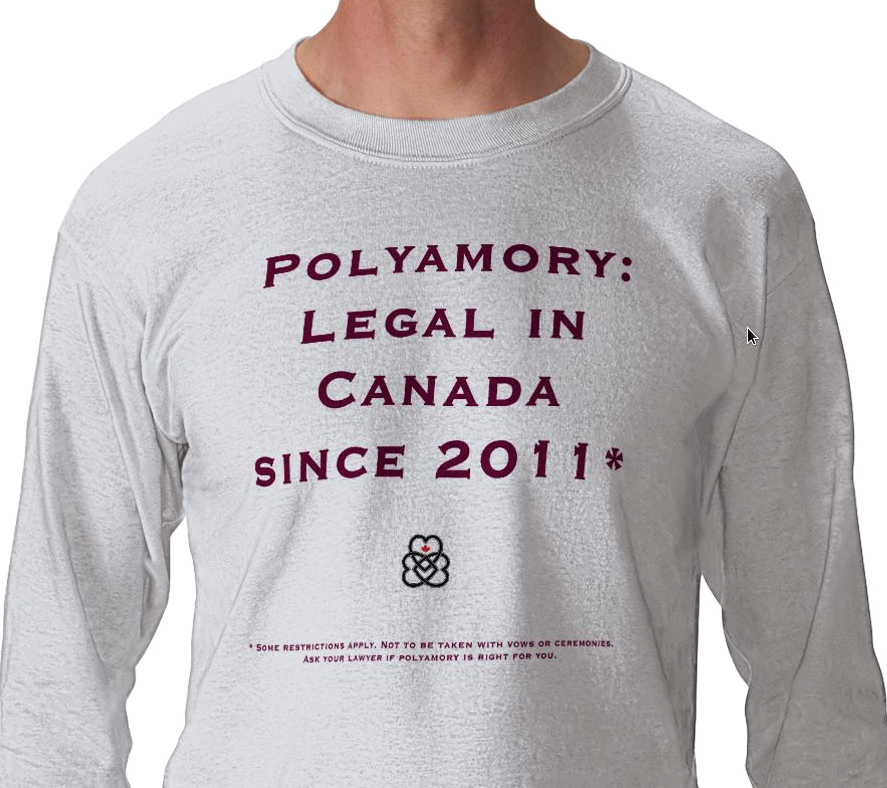 So, for example, Islam allowed polygamy, while in the Christian tradition only a monogamous family was considered normal. In Muslim countries, a woman could not be married to more than one man at the same time, and in the event of the death of her husband, she remarried only after a certain period of time - thus it was possible to accurately establish paternity.
So, for example, Islam allowed polygamy, while in the Christian tradition only a monogamous family was considered normal. In Muslim countries, a woman could not be married to more than one man at the same time, and in the event of the death of her husband, she remarried only after a certain period of time - thus it was possible to accurately establish paternity.
With the advent of cities and industry, attitudes towards marriage changed again. There was more freedom in the cities both from traditional social roles and from the pressure of dogmas and religious attitudes. An important component of sexual freedom was brothels, which, although condemned from the point of view of the church, nevertheless contributed to the legitimization of polygamy. In some Western cultures, polygamy is allowed, such as the Mormons, who become the butt of jokes in American culture. So the hero of Jules Verne's novel "Around the World in 80 Days" Passepartout speaks of the Mormons with sincere pity, hardly understanding how to withstand at least one wife. But polygamy in the United States persisted only until 1890s, and after that it was prohibited at the legislative level.
But polygamy in the United States persisted only until 1890s, and after that it was prohibited at the legislative level.
Family laws in many countries have been adopted in favor of a monogamous family model. So polygamy is prohibited and considered a crime even in those countries where it was allowed before: in China, Japan and Indonesia. At the same time, there is a “polygamy belt” on the map, stretching from Africa to Southeast Asia across countries where multiple marriages are legally allowed. However, the existence of laws allowing or prohibiting polygamy does not prevent people from living a polygamous lifestyle, having lovers or second families.
“It can be said that infidelity is the most natural behavior for both humans and many animals. In truth (and we'll come back to this), this is the most common practice among humans - more common than classical monogamy and all types of consensual non-monogamy combined. Please keep in mind that I am not talking about morality now - this is a cultural issue,” writes in his book “Polyamory. Freedom to choose" Masha Halevi.
Freedom to choose" Masha Halevi.
Attitude towards polygamy in the modern world
If we talk about the West, then despite all the past sexual revolutions, we live in a mononormative society - this is how Masha Halevi describes it. Although the culture is no longer so harshly condemning people who have several partners at the same time, a large layer of it is devoted to monogamy and is perceived by default: the wedding day for many is the starting point for "happily ever after", songs and films about princes on white horses and princesses in the tower are dedicated to "that one and only partner for life."
At the same time, with the advent of affordable divorces, human culture has taken a big step towards polygamy. Serial monogamy has become socially approved - this is the practice of several consecutive relationships with different partners that is common today, Masha Halevi writes in her book. It became permissible to complete one marriage, then enter into another with a new partner.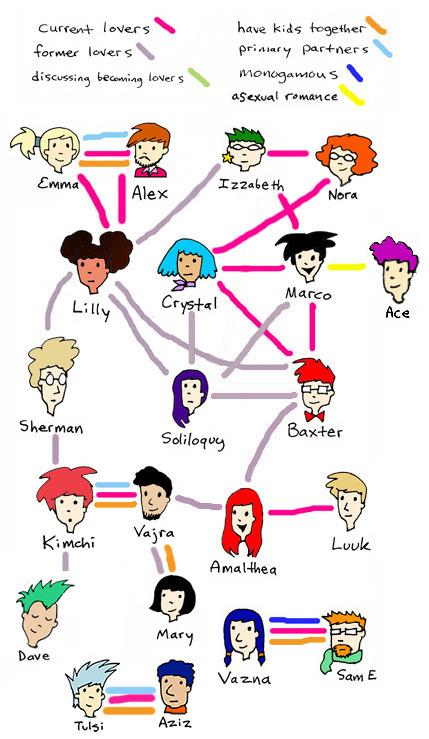 At the same time, it was not forbidden to maintain relations with previous partners - this can be called social polygamy. But at the same time, the parallel conduct of relationships with several partners is often condemned and labeled as treason.
At the same time, it was not forbidden to maintain relations with previous partners - this can be called social polygamy. But at the same time, the parallel conduct of relationships with several partners is often condemned and labeled as treason.
Art about polyamorous families with more than two partners who are aware of and approve of each other is increasingly on the cultural agenda. Also, sex bloggers openly lead a polyamorous life, talking about the intricacies of such a choice.
Nobody is saying that monogamy will soon give up its post before polygamous unions. The authors agree that for many people, polygamous relationships are more comfortable and safer. According to the authors of books on polyamory, Masha Halevi and Olga Dulenko, polygamous relationships are possible only when partners successfully master the level of monogamy with all the difficulties, such as leading discussions, solving problems and conflicts.
evolutionary biologist on monogamy and polygamy in males and females - T&P
An essential part of sex education concerns human evolution and reproductive behavior.
 What are the biological prerequisites for masturbation? What is the principle of action of contraceptive pills? Can the incidence of breast cancer be reduced? Are there seasonal spikes in fertility? Biologist Robert Martin answers many of these questions in his book How We Do It. T&P publishes an excerpt from its Russian version, which was published by the Alpina Non-Fiction publishing house with the support of the Dynasty Foundation, about myths about monogamous women and polygamous men.
What are the biological prerequisites for masturbation? What is the principle of action of contraceptive pills? Can the incidence of breast cancer be reduced? Are there seasonal spikes in fertility? Biologist Robert Martin answers many of these questions in his book How We Do It. T&P publishes an excerpt from its Russian version, which was published by the Alpina Non-Fiction publishing house with the support of the Dynasty Foundation, about myths about monogamous women and polygamous men. evolutionary biologist, anthropologist
"How We Do It"
Two important conclusions can be drawn from the social structure of great apes, our closest animal relatives. Firstly, different groups of great apes are characterized by fundamentally different mating systems: gibbons - monogamy, orangutans and gorillas - harems (although the orangutans have a scattered harem, and the gorillas live in a close-knit group), and chimpanzees - promiscuity within the associations of many males and females.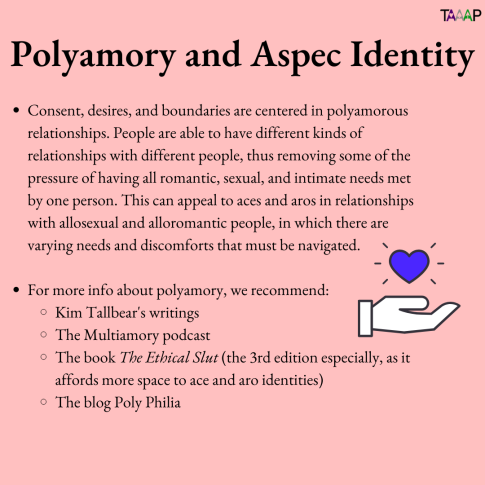 Second, social systems can differ significantly even within a group of relatively closely related primates such as the great apes. Different primates have different forms of social organization, but they can all be divided into three main varieties, illustrated by four examples above: monogamy, polygyny (harems), and promiscuity. In principle, a fourth variety is also possible - polyandry, that is, association in groups that include one adult female, several adult males and young animals. But this kind of social organization is extremely rare among primates.
Second, social systems can differ significantly even within a group of relatively closely related primates such as the great apes. Different primates have different forms of social organization, but they can all be divided into three main varieties, illustrated by four examples above: monogamy, polygyny (harems), and promiscuity. In principle, a fourth variety is also possible - polyandry, that is, association in groups that include one adult female, several adult males and young animals. But this kind of social organization is extremely rare among primates.
Trying to determine which of the varieties of social organization identified for other primates is characteristic of humans, we immediately run into difficulty. Modern human societies cannot be generally reduced to any one of these varieties. In them one can find examples of almost all the main variants of social organization: some societies are monogamous, others are polygamous, and people have not only polygyny (polygamy), but in rare cases even polyandry (polyandry). However, no human society seems to have the complete promiscuity that chimpanzees have. Nevertheless, people are characterized by exceptional flexibility of the social structure. The development of this flexibility (reflecting the loosening of biological constraints) was undoubtedly one of the important features of our evolution.
However, no human society seems to have the complete promiscuity that chimpanzees have. Nevertheless, people are characterized by exceptional flexibility of the social structure. The development of this flexibility (reflecting the loosening of biological constraints) was undoubtedly one of the important features of our evolution.
© Jill Greenberg
In their 1951 classic Patterns of Sexual Behavior, reproductive biologists Clellan Ford and Frank Beach analyzed data from nearly two hundred human societies and arrived at the conclusion about the predominance of polygyny found in 3⁄4 societies from the considered sample. However, we cannot be sure that the common ancestors of all people were characterized by polygamy, because even in conditionally polygamous societies, marriage unions are often monogamous by default, because many men, for economic reasons, cannot afford to have more than one wife. Some authors, such as Desmond Morris in his book The Naked Ape, have concluded that people are monogamous because in many modern societies, monogamous unions are much more common than polygamous ones.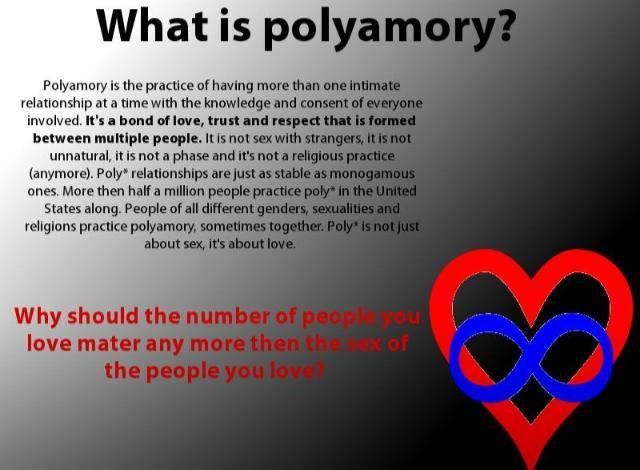 Furthermore, there is little to suggest that the human species has an innate tendency towards either monogamy or polygamy.
Furthermore, there is little to suggest that the human species has an innate tendency towards either monogamy or polygamy.
Pairing is even rarer among other mammals than among primates: only 3% of species. At the same time, most species (about 90%) live in pairs among birds. It is often said about people that " men are polygamous, and women are monogamous". You can really say this about mammals and birds in general: mammals are polygamous, and birds are monogamous. Why do most birds live in pairs, while most mammals do not? Most likely, this is due to the care of offspring. In birds that live in pairs, the male usually helps the female incubate the eggs and feed the chicks, enabling her to leave the nest and participate in the foraging. Mammals have no such restrictions. In marsupials and placental mammals, the young develop in the mother's body until birth, corresponding to the exit from the egg in birds. After giving birth, female mammals do not directly obtain food for their cubs, but feed them with milk formed from the resources of the mother's body. Therefore, the offspring of mammals can usually do without paternal care.
Therefore, the offspring of mammals can usually do without paternal care.
Indeed, in most mammals, males are not directly involved in caring for offspring. Comparison with birds suggests that in those rare cases when monogamy arose in mammals during evolution, this was due precisely to the care of offspring. Ethologist Devra Kleiman has demonstrated this for several species of primates and a number of other mammals, especially members of the canine family. Remarkably, compared to other primate babies, human babies are especially helpless and therefore need active parental care. As I will discuss in Chapter 5, this helplessness is due to one important innovation in human evolution. One way or another, compared to other primates in humans, newborns are much more in need of social support.
It would seem that the mating system of one species or another would be expected to correspond to its characteristic social system. For example, it might seem obvious that in species living in pairs, all the offspring of each female will be the offspring of one father. In other words, life in pairs and strictly monogamous mating can be taken as two sides of the same coin. Oddly enough, for 9 out of every 10 bird species studied in pairs, it was shown that males do not always take care of their own offspring: about half of the chicks are born as a result of mating females with "foreign" males. The question is: why such matings could not be seen through binoculars by crowds of ornithologists - both amateurs and professionals? The answer is that "illegal" matings happen quickly and covertly. A deceived male may know no more about them than a peeping ornithologist. Thus, social organization and the mating system cannot be considered simply two sides of the same coin: they can also change independently of each other, at least to some extent.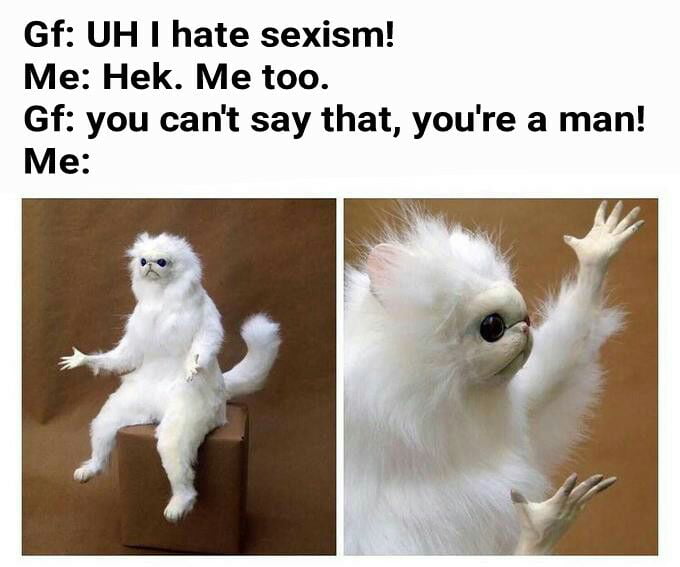 This also applies to mammals, including primates.
This also applies to mammals, including primates.
© Jill Greenberg
Strange as it may seem, people tend to entertain two conflicting notions: that humans are normally monogamous, and that men are more likely to cheat on women than women are on men. I have already mentioned the conventional wisdom that men are polygamous and women are monogamous. The American journalist Henry Louis Mencken once quipped, "Only married women and unmarried men are truly happy." But if women are usually monogamous and men are usually polygamous, then where, one wonders, do men take additional partners? This mystery also follows from the data of many surveys, according to which one man, on average, has more sexual partners than one woman has partners.
But if, according to men, they have on average, say, ten partners, and women, according to their reports, have only four partners, then what were the six additional partners of each man? One common explanation is that, although participants in such surveys are guaranteed anonymity, men tend to exaggerate the number of their partners out of boastfulness, and women tend to underestimate the number of partners out of modesty. Based on the simplest mathematical considerations, if this or that society as a whole is monogamous, then there are only two possibilities: either women and men cheat equally often, or the sexual needs of many unfaithful men are satisfied by a few women, each of whom has a lot of partners. As one recent study has shown, the inflated number of partners reported as males is due to the fact that they counted prostitutes but were apparently embarrassed to admit that they were paying for their extra sexual experience.
Based on the simplest mathematical considerations, if this or that society as a whole is monogamous, then there are only two possibilities: either women and men cheat equally often, or the sexual needs of many unfaithful men are satisfied by a few women, each of whom has a lot of partners. As one recent study has shown, the inflated number of partners reported as males is due to the fact that they counted prostitutes but were apparently embarrassed to admit that they were paying for their extra sexual experience.
This brings us to a fundamental evolutionary question: Is man biologically adapted to some particular form of social organization and some particular system of sexual relations? As a comparison of different cultures shows, as a species we are extremely variable in both respects. Comparison of humans with other primates also does not give an unambiguous answer, but despite all the ambiguity of the situation, many authors try to solve this problem simply: they consider chimpanzees as a “frozen ancestor” and conclude that initially our ancestors were characterized by multi-male groups and promiscuity. Others go to the opposite extreme, emphasizing that the available data are insufficient and therefore it is impossible to draw an unambiguous conclusion about the social structure and system of sexual relations of our ancestors. Moreover, it is widely believed that the social organization and system of sexual relations in humans do not have biological foundations at all and are entirely determined by social norms accepted in human society. According to this view, monogamous marriage is a purely social construct, not associated with any biological predisposition. But both of these extreme views do not stand up to scrutiny.
Others go to the opposite extreme, emphasizing that the available data are insufficient and therefore it is impossible to draw an unambiguous conclusion about the social structure and system of sexual relations of our ancestors. Moreover, it is widely believed that the social organization and system of sexual relations in humans do not have biological foundations at all and are entirely determined by social norms accepted in human society. According to this view, monogamous marriage is a purely social construct, not associated with any biological predisposition. But both of these extreme views do not stand up to scrutiny.
© Jill Greenberg
One important piece of evidence about the form of social organization is the difference in body size between adult males and females. In some species of primates, males and females almost do not differ in size (monomorphic), while in others they differ significantly (dimorphic), and males are usually larger than females. It is significant that primates living in pairs are usually monomorphic: the sizes of males and females are comparable, and the difference between them does not exceed 15%.